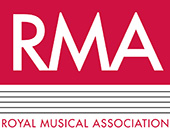This conference had a welcoming and friendly atmosphere that was particularly supportive of early-career scholars. The University campus was a relaxed venue, and the weather was kindly fine for the conference barbecue.
The two keynote sessions set the bar high for the presentations. Benedict Taylor gave a thought-provoking paper about the lines of enquiry that can emerge from a study of Elgar’s part-song ‘There is Sweet Music’. Sophie Fuller’s paper on the late Victorian and Edwardian musical salons included reference to some intriguing projects to recreate and reimagine them, like the Sounding the Salon digital project which, with Phyllis Weliver, had reconstructed an 1873 salon held by Mary Gladstone.
Two parallel sessions operated for the rest of the time, making for inevitably difficult decisions over what to choose and some undoubtedly excellent ones had to be missed. The two meeting rooms were, however, close, which made hopping between them easy.
The themes covered were wide ranging, and several interesting lines of enquiry were illustrated. The value of various and a few unusual sources was demonstrated more than once. Ross Purves’s detailed look at the life and work of late Victorian and Edwardian examiners grew from his discovery of an Examination Certificate of 1909. Candace Bailey showed what could be learnt about people, musicking, culture, and more, from the collection of music of an unknown amateur, Eliza Abram, to be found in a surviving binder’s volume of her music.
In addition to Elgar, another well-known composer who received attention was Claribel (Charlotte Alington Barnard). Whitney Thompson threw light on her extraordinarily successful business strategy. Just as interesting were the studies of little-known musicians. Jonathan Frank’s paper about James William Windsor (1779-1853) gave an insight into the life and work of a man whose large and influential family were present in Bath for almost a century. He included among his friends musicians such as Vincent Novello, George Smart, and Carl Czerny. He was instrumental in founding the Bath Philharmonic Society and was widely respected. He remained, however, modest but nevertheless had great impact on the musical life of his home city. Russell Burdekin talked about the even lesser-known Frances Susanna(h) Shannon who was probably at least part author of two opera librettos one of which was John Barnett’s successful The Mountain Sylph of 1834. It was intriguing to consider the evidence and realise how little visibility she has had.
Two papers about amateur players both focused on the later years of the Victorian era and demonstrated the social context of musical activities. Christina Bashford looked at amateur string-player communities ca. 1890-1914 and how their music making brought social benefits and ‘imagined’ communities of players were encouraged to feel nationwide connections. Kathleen McGowan focused on the particular musical communities at Girton and Newnham women’s colleges in Cambridge, 1869-1893. An important source was the ‘Girton Review’ which included reports on music from 1882 onwards. This showed how the women contributed to the musical life of Cambridge and their surrounding area.
Audiences were not forgotten. Paul Britten gave a thorough account of smoking concerts which were very popular in the 1890s. Enthusiasm for them coincided with a greater increase in interest in amateur music making and so events with smoking, alcohol, and music flourished catering for middle and upper-class men. Michael Busk spoke about an earlier time and the Manchester Musical Festival of 1828, when the organisers maximised audience size with the help of an architect, not only for the concerts but also for largest fancy-dress ball ever seen in Europe. Manchester Collegiate Church was adapted with the design and construction of a massive gallery that was placed over the choir and chancel.
Continental influences from both Germany and Italy came under scrutiny. Oliver Puckey argued that music was integral to the way British people engaged intellectually with Germany. Chloe Valenti explored the influence of Italian songs on Victorian popular music.
Finally, the thoroughly entertaining paper by Tamsin Alexander stood out as an example of the breadth of research needed to get an understanding of music in the long nineteenth century. Her research into the impact of electric light, first used in the early 1880s, showed how this technological innovation changed the spectacle and comfort of concerts.
The whole three days seemed to flow seamlessly, thanks must go to the Conference Committee for their hard work in organising it, and especially to Rosemary Golding, Martin Clarke, and Helen Barlow all of the Open University. The next Music in Nineteenth-Century Britain Conference will be in two years’ time. It will undoubtedly be just as fascinating and will show more of the great variety of research that is being done.
Sarah Clarke is Visiting Fellow in Music at the Open University and a member of the Cambridge Consortium for Guitar Research.
